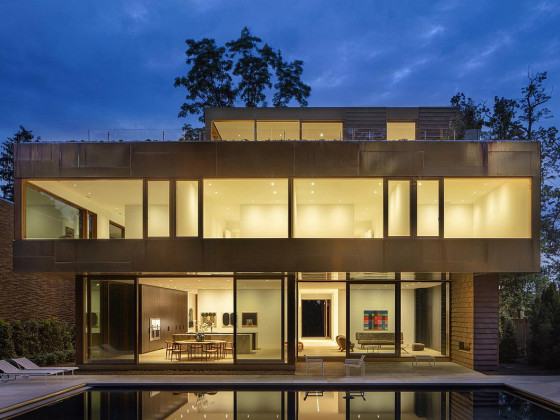What's Hot: Nicklas Backstrom's $12 Million McLean Home Finds A Buyer | HPO Recommends Approval Of Georgetown Conversion
 Shaw, Karachi and an Uncomfortable Truth
Shaw, Karachi and an Uncomfortable Truth
✉️ Want to forward this article? Click here.

Skateboarder in Shaw. By Amanda Abrams.
A few days ago on Atlantic Cities, NPR’s Morning Edition host Steve Inskeep juxtaposed how two places he knows well — Shaw, the neighborhood where he lives, and his academic interest, the Pakistani city Karachi — manage the diverse incomes, races and ethnicities of their residents.
Ten years ago, Inskeep joined the wave of mostly white newcomers moving to Shaw, and as the neighborhood changed, he noted that some felt the government and developers were catering more to the new residents than those that have lived there for decades. Shaw tried to keep growing tensions at bay by highlighting the area’s African-American heritage and maintaining landmark black-owned businesses, but as Inskeep noted, “the practical details take constant work, especially when we live in a swiftly changing city.”
In contrast, there is Karachi. Before 1947, Karachi was a typically mixed Indian city, with a majority of Hindus living alongside a Muslim minority. After partition, Karachi became part of Islamic Pakistan. Following much bloodshed as Hindus fled to India and Muslims to Pakistan, Karachi is now 90 percent Muslim. Conflicts in the city are staggering — 1,747 people were killed in Karachi in 2009, and hundreds have been killed this year in various bursts of violence.
“Karachi became less stable as it became less diverse,” wrote Inskeep. “The people who remained found new divisions among themselves. The city wasn’t as homogenous as it seemed.”
Tensions in Karachi and Pakistan are due to more than just diversity (or a lack of it). But the idea that diversity is something that must be managed is interesting in an environment like DC, where mixed-income communities are popping up everywhere.
Cities like New York City, London and Los Angeles have proven that creativity springs from diversity, and anyone who has worked in a cultural hodgepodge has probably seen that varying perspectives lead to innovative problem solving. But a few years ago, urban planners were confronted with an uncomfortable truth.
In 2007, Harvard political scientist and “Bowling Alone“ author Robert Putnam published a widely publicized study, which concluded that when neighborhood diversity increases, civic engagement goes down. After interviewing over 30,000 people, Putnam found that people vote and volunteer less, distrust their neighbors more, and give to charity less in mixed neighborhoods.
Putnam is a pro-diversity liberal and struggled with his own findings, which were greeted with excitement by anti-immigrant groups. Ultimately publishing with an eye towards how to remedy the consequences, Putnam closed his study by recognizing that the sense of who is in one’s “group” constantly evolves and often expands, and recommended that neighborhoods build community centers and create places for meaningful interactions.
There are some bright spots in the global neighborhood, however. Earlier this month, GOOD interviewed John Tory, a politician from Toronto where the city motto is “Diversity Our Strength” and 50 percent of the population is foreign-born. Tory is the co-chair of the DiversityCity project, which developed when Torontonians realized that minority groups were underrepresented in leadership positions. The project is one way Toronto is trying to consciously integrate the community.
“We don’t have a lot of the history that perhaps makes these issues a bit more challenging for the United States,” Tory told GOOD. “The lack of that history made it easier to start from scratch to absorb all kinds of different people,”
Vancouver also has government-backed programs to manage their diversity. In February, Mayor Gregor Robertson spoke to the The Globe and Mail about the city’s integration initiatives. “The immigration group looks at economic integration of newcomers and works with other levels of government to this end,” Robertson told The Globe.
We talk about gentrification and demographic shifts all the time, but is DC doing enough to manage its diversity?
See other articles related to: demographics, diversity
This article originally published at http://dc.urbanturf.production.logicbrush.com/articles/blog/shaw_karachi_and_an_uncomfortable_truth/4769.
Most Popular... This Week • Last 30 Days • Ever

With frigid weather hitting the region, these tips are important for homeowners to ke... read »

Today, UrbanTurf offers a brief explanation of what it means to lock in an interest r... read »

A new report from DC’s Office of Revenue Analysis highlights how millennials and wo... read »

The number of neighborhoods in DC where the median home price hit or exceeded $1 mill... read »

An application extending approval of Friendship Center, a 310-unit development along ... read »
DC Real Estate Guides
Short guides to navigating the DC-area real estate market
We've collected all our helpful guides for buying, selling and renting in and around Washington, DC in one place. Start browsing below!
First-Timer Primers
Intro guides for first-time home buyers
Unique Spaces
Awesome and unusual real estate from across the DC Metro














